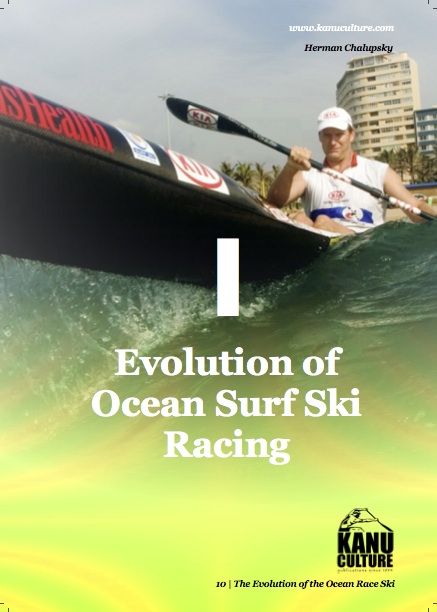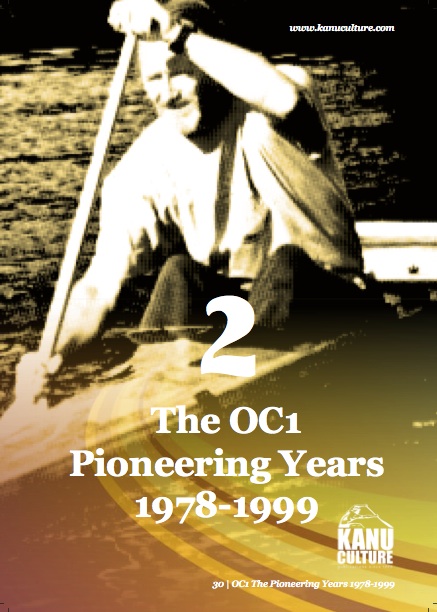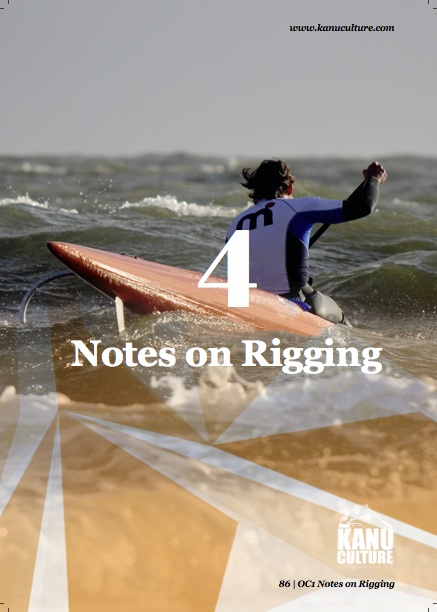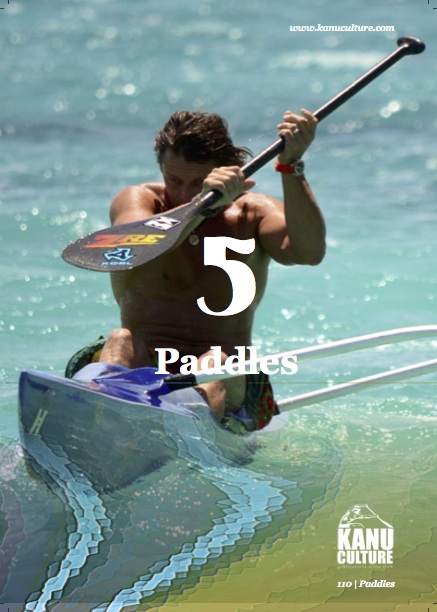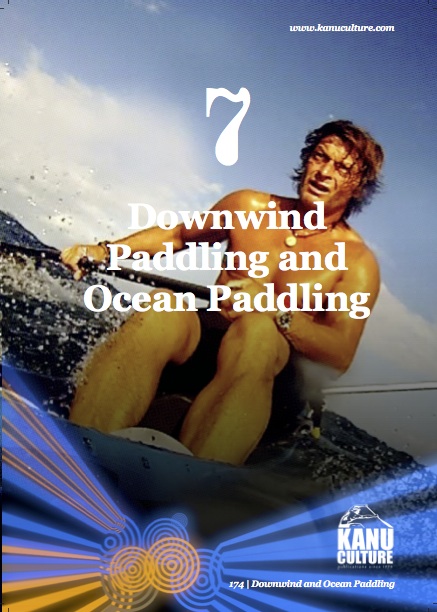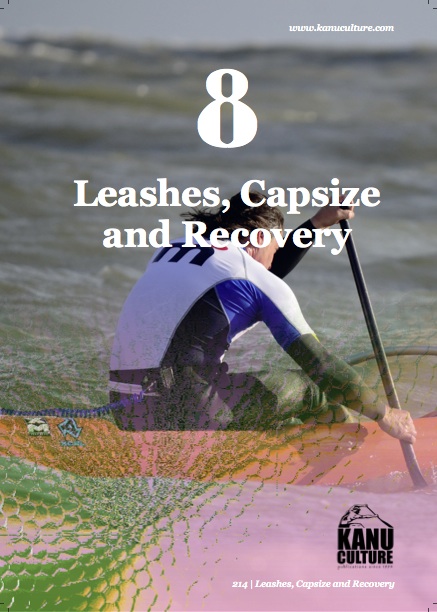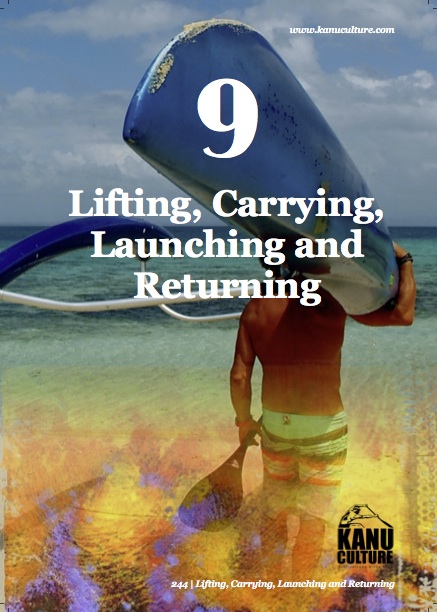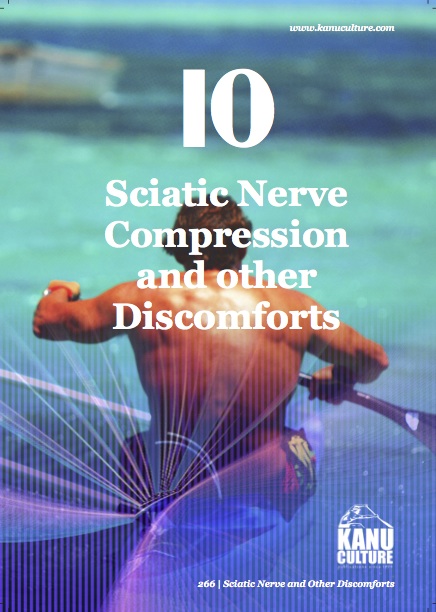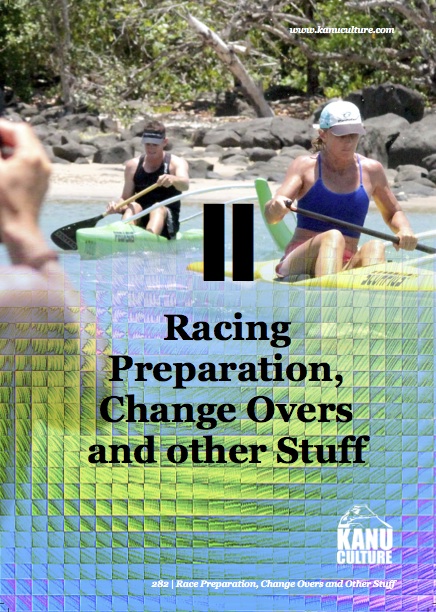PURCHASE PAPERBACK OR PDF DIGITAL VERSION
306 pages, mono and colour pages, soft cover, perfect bound.
A5 210mm x 148 x 43mm (8.27" x 5.82"
“This book is very probably over-due by a considerable number of years and in some sense the sport has certainly seen a peak and levelling off over the past ten years or so, but today in 2014, there’s every reason to sense that the sport is once again experiencing a surge of renewed growth as it reaches ever newer gene pools far from the sports roots and origins.”
“I see that the OC1 book has made the website, so send it here now! Seriously, if you have my card data, just put my copy in the mail today as the OC6 Paddlers Guide Book, wrapped me up for a good hunk of time, it was great! Speaking of ‘wrapped’ I have never gotten a book in the mail that was so well packaged.”
1. Evolution of Ocean Surf Ski Racing
From the point of view of the evolution of the OC1, it's fitting that we also fill in the blanks regarding the origins of the surf ski together with some of the evolutionary design features added, which later went on to be copied by OC1 designers.
As we will see, the onward journey for development of the OC1 ultimately came down to being a hull approximating a hybrid ocean racing surf ski with an outrigger assembly attached - though a major difference being an OC1 hull can be narrowed to take advantage of the functionality of the ama. Both of these paddle sports emanated ultimately out of a desire to produce an open ocean solo paddling craft.
2. OC2 Pioneering Years 1978 - 1999
The evolution of the open ocean OC1 was not without contention, though ultimately it was totally embraced as paddlers, associations and rule makers came to grips with this quasi-traditional variant of the Tahitian V1. Hybrids tend to evolve from mixed concepts and plagiarised ideas to give us something less than purebred, irrespective of whether it's better or not. There often comes a point where it is no longer what it began life as, in concept or application and so it is with the OC1 when compared to its close cousin, the V1. Had we seen an advancement of the V1 or merely the evolution of a new paddle sport altogether?
3. 2000 Onwards
From 2000 onward, there have been few major points of advancement, save for many micro-management adjustments to rudder positions, ama design, seat comfort, rigging adjustability and tweaking of hull designs, but during 2013 and 2014 there has been a major rethink of ama design in particular.
Downwind specific canoes have became more advanced and specialised to meet rider needs as skill levels have escalated. Some canoes have been made for 'flatter' conditions, but for pure flat water OC1 paddling conditions, there has been little demand for investment - this remains the domain of the V1 rudderless craft.
4. Notes on Rigging
The relationship between the primary hull and the secondary hull (ama) is critical to the overall handling of the sum of the whole. This is the best way to consider the ama - as a secondary hull rather than a mere appendage which should be negated out of the equation by having as little contact with the water as possible. Rigging is entirely about the ama's relationship with the canoe, not the other way around.
5. Paddles
Naturally, you're going to want to kit yourself out with a decent paddle and I say 'decent' in the literal sense, as I have always maintained the view, that a well designed, well balanced, light weight paddle is in no way a luxury or something to aspire to, it is in short an absolute necessity if you're to maximise your enjoyment and time on the water and therefore make the most of your OC1.
6. OC1 Paddling Technique
As a consequence of some limiting factors relating to seat height (read on further) there's over-whelming evidence which supports the fact, that OC1 paddlers will often tend to rely somewhat more on the biceps, triceps and forearms to generate power on account of a compromising of the ability to rotate (twist) into the stroke and engage the core muscle groups as readily as with paddling in a team canoe.
7. Downwind Paddling
This particular form of outrigger canoeing, is essentially the catalyst which set in motion the development of the OC1 craft, the foundation of major races and the nurturing of a branch of the sport which truly tests the paddler's abilities in combined surfing and paddling skills; dependant on endurance and an entire repertoire of ocean skills and physicality which may be honed over many years of devotion to an ocean sports lifestyle.
8. Leashes, Capsize and Recovery
Being 'leashed up', sounds like madness when you first encounter the idea, but based on a variety of ocean/water and wind conditions there are times when it is totally applicable and sensible. We take an in-depth look at solutions and challenge the conventional knee to forward i'ako arrangement and look at waist worn leashes and capsize, recovery scenarios.
9. Lifting, Carrying, Launching and Returning
You may wonder why I include a section devoted to carrying and lifting, but the fact is, good technique (physics) is required when handling not only such a relatively delicate, expensive and no doubt 'precious' craft, but one which is ultimately awkward on account of it's length and the added issue of the i'ako and ama. Regarding these issues, there are a few basic things to consider.
10. Sciatic Nerve Compression and Other Discomforts
If there's one commonality shared by many OC1 paddlers in particular (less so with V1 paddlers on account of the higher seat and no footwell) it's pain and numbness radiating from the left buttock, along the hamstring (seemingly) into the back of the knee and on occasion resulting in pins and needles or even a numb left foot. In some cases it's just sheer pain in the butt. The culprit in all of this is the sciatic nerve extending the length of the left leg.
11. Race Preparation, Change Overs and Other Stuff
The concept of race strategy and preparation is a complex issue, it is however what sets those who take their racing seriously from those who 'also raced'. Ultimately it is a form of management. Preparation is primarily a pre-race strategy for success, a strategy which brings together all the facets of that pre-race preparation when on the start line and once the race begins, to ensure the greatest success.
ENVIRONMENTAL CONCERNS: We've taken environmental factors into consideration in the production of this new book, opting for 'Digital Printing', the future for environmentally conscious book manufacture. This process eliminates the need for lithographic plates and chemical usage and reduces waste disposal. We have also opted to use paper guaranteed to be grown under the guidance of the 'Forestry Stewardship Council' (FSC) who ensure the use of legal, sustainable, plantation timbers. Our chosen printers are at the top of the field in environmentally sound print production.
The purpose of this book regarding OC paddling is to heighten your experience and deepen your connection to the sport and the craft, whether new to it or perhaps a veteran. This may result in a path of learning which helps assume an upward spiral, if you have found yourself on a plateau from where you are finding it hard to move to another level.
The evolution of the surf ski followed its own natural pathway and to this end I have included content regarding this on account of the fact we can get a clear picture of how the OC1 came into being and how in many ways, though the V1 Tahitian va'a hoe was used as a 'template' for development, when push came to shove, many Hawaiian evolutionists, borrowed from surf ski concepts while at the same time (ironically) being critical of surf ski manufacturers who were simply 'bolting' on outrigger assemblies and tweaking their own hull designs.
Ownership of an OC1 permits many benefits for the paddler, not least of which the option to train when you want without the need for others in the case of also being part of an OC6 or V6 crew. The benefits are far reaching and there are significant cross-flow affects into that of team-canoes, both in raising skill levels, fitness and ultimately for the purposes of crew selection, to which coaches will often resort as one of a series of mechanisms.
I have been fortunate to witness the sports expansion and on occasion I can safely say I had a hand in nurturing the sports growth through my books, participation and hands on with some of the designs.


